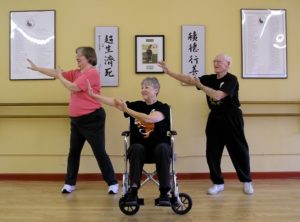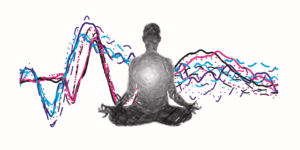Improve Balance in Stroke Survivors with Qigong
By John M. de Castro, Ph.D.
“One of the main issues that a stroke survivor experiences is a problem with balance. Factors contributing to this issue include vision impairments, unbalanced inner-ear equilibrium, or physical weakness on one side of the body. This is where tai chi can make a huge difference. With a complete focus on slow, controlled, and repetitive movements, tai chi is effective in improving one’s balance through dynamic motion and coordination, which is crucial to prevent falls.” – Saebo
Every year, more than 795,000 people in the United States have a stroke and it is the third leading cause of death, killing around 140,000 Americans each year. A stroke results from an interruption of the blood supply to the brain, depriving it of needed oxygen and nutrients. This can result in the death of brain cells and depending on the extent of the damage produce profound loss of function.
There are a number of risk factors for stroke that are unchangeable, such as family history, age, and genes. But there are a very large number of factors that are under our control including high blood pressure, smoking, high cholesterol, poor diet, sedentariness, and obesity. Given this list it is clear that basic physical fitness and exercise would be excellent for stroke prevention. Yoga practice is an exercise that can be adapted to the needs and limitations of stroke victims. The ancient mindful movement technique Tai Chi and Qigong are very safe forms of gentle exercise that appears to be beneficial for stroke victims. It is difficult to get stroke survivors to engage in exercise. Perhaps the practices of yoga or Tai Chi and Qigong, since they are adaptable and very gentle, might be acceptable and effective in the treatment of stroke survivors.
In today’s Research News article “Effects of Mind–Body Movements on Balance Function in Stroke Survivors: A Meta-Analysis of Randomized Controlled Trials.” (See summary below or view the full text of the study at: https://www.ncbi.nlm.nih.gov/pmc/articles/PMC6025433/ ), Zou and colleagues review, summarize, and perform a meta-analysis of the published research literature on the effectiveness of the mindful movement practices of yoga or Tai Chi and Qigong for assisting in the rehabilitation of stroke victims. They found 18 published randomized controlled studies.
They found that mindful movement practices produced strong and significant improvements in balance of the patients recovering from stroke. This is particularly important as problems with balance can lead to falling which is a leading cause of injury and death among stroke victims. So, improved balance is an important benefit to the patients. These results are encouraging and suggest that the mindful movement practices of yoga or Tai Chi and Qigong should be used in the rehabilitation or stroke victims.
So, improve balance in stroke survivors with yoga, tai chi or qigong.
“The main physical benefits of Tai Chi are better balance, improved strength, flexibility and aerobic endurance. Psycho-social benefits include less depression, anxiety and stress, and better quality of life.” –Ruth E. Taylor-Piliae
CMCS – Center for Mindfulness and Contemplative Studies
This and other Contemplative Studies posts are also available on Google+ https://plus.google.com/106784388191201299496/posts and on Twitter @MindfulResearch
Study Summary
Zou, L., Yeung, A., Li, C., Chiou, S.-Y., Zeng, N., Tzeng, H.-M., … Thomas, G. A. (2018). Effects of Mind–Body Movements on Balance Function in Stroke Survivors: A Meta-Analysis of Randomized Controlled Trials. International Journal of Environmental Research and Public Health, 15(6), 1292. http://doi.org/10.3390/ijerph15061292
Abstract
Objective: We performed a systematic review with meta-analysis and meta-regression to determine if mind–body movements (MBM) could be effective in rehabilitating balance function among stroke survivors. Methods: A literature search was conducted using major Chinese and English electronic databases from an inception until January 2018. Randomized controlled studies were included in our meta-analysis. Data was independently extracted by two review authors using a pre-developed table and confirmed by a third party to reach a consensus. Pooled effect size (Hedge’s g) was computed while the random-effect model was set. Results: The meta-analytic results showed a significant benefit of the MBM intervention on increased balance function compared to the control groups (Hedge’s g = 1.59, CI 0.98 to 2.19, p < 0.001, I2 = 94.95%). Additionally, the meta-regression indicated that the total number of sessions (β = 0.00142, 95% CI 0.0039 to 0.0244, p = 0.0067) and dose of weekly training (β = 0.00776, 95% CI0.00579 to 0.00972, p = 0.00) had significantly positive effects on balance function. Conclusions: The study encouraging findings indicate the rehabilitative effect of a MBM intervention for balance function in stroke survivors. However, there were significant limitations in the design among several of the included trials. Additional studies with more robust methodologies are needed to provide a more definitive conclusion.
https://www.ncbi.nlm.nih.gov/pmc/articles/PMC6025433/









